My image of a normal functional frog is one that is broad and firm, that barely touches the ground when the foot is un-weighted but, as weight is taken on the leg, is compressed increasingly between the digital cushion, as the pastern descends, the ground and the bars. Thus the frog is able to contribute to the anti-concussion mechanism of the foot by its compression, as weight is applied, and by the hydraulic damping effect of the blood as it is forced out of the foot through the veins. It will also reduce slipping, as a result of increased friction as the foot is weighted.
The ability of the narrow atrophied frog to function properly is greatly reduced because of limited ground contact, and thus frog compression.
It is generally accepted that regular ground contact stimulates frog growth, but is it the lack of frog stimulus in these feet that results in the foot shape and the receded frog, or is it the foot shape that is the primary problem?
Thin, receded frogs are commonly found in narrow upright feet with strong hoof walls. The extent of the bars can only be seen if the frog is removed, this being done in cadaver specimens, and in this type of foot they are strong and straight. This extreme example, of a foot from a chronic laminitic horse, shows the shape and size of the bar, and how its length increases from two inches at the heel, to three inches, further forward into the foot.
Cutting off the back of the heel at this site, shows the two long rigid pieces of horn, the hoof wall and the bar, fixed firmly together by a very deep layer of sole.
With these rigid structures making up both heels, the frog will be suspended and unable to function properly, receiving reduced stimulation from ground contact.
In this example, the deep flexor tendon has been cut, at the point where it over-lies the navicular bone. I put this in because, if feet like these are unable to expand, when the pastern descends as weight is applied, the tissues in the navicular region are unlikely to be so well protected in a foot that has reduced anti-concussive function, and could thus be more prone to injury.
Although fitting some form of pad to lie under the frog will increase compression and stimulation, I don't think we can realistically expect an improvement in the size and function of the frog unless both the hoof wall and bar reduced sufficiently to allow function to return to the heels.
In some cases, it may not be suitable to reduce heel height significantly but, in these, it might be possible to improve expansion by taking more from the bars.

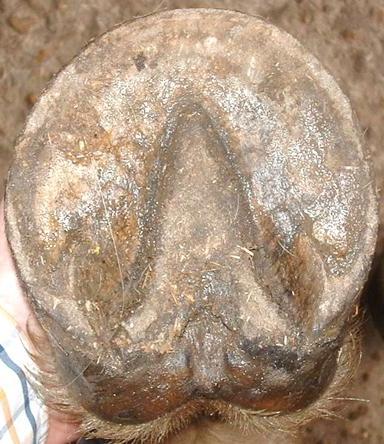
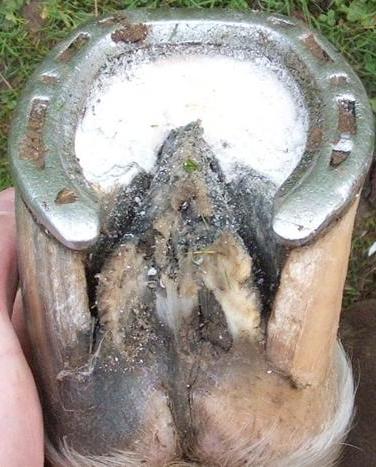
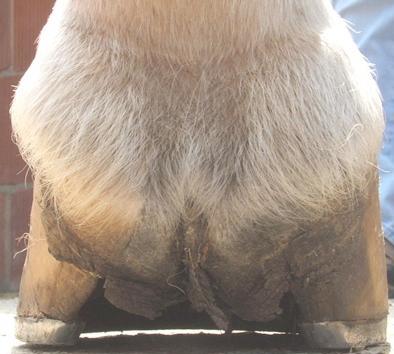
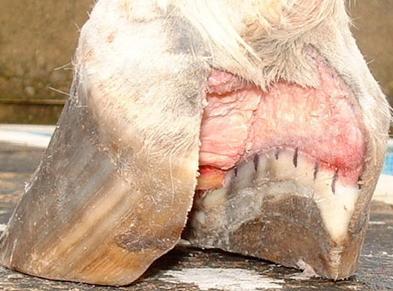
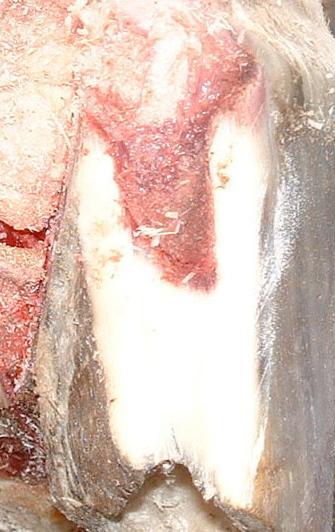






Post a comment
Report Abusive Comment